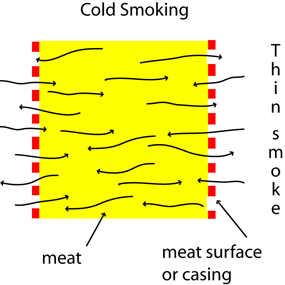This "page 2" discussion which I initially overlooked points out the great unknowns in the ideal "time profile" of humidity in cooking. Blonder has a nice article on the application of humidity in cooking,and he's quite a believer in its benefits and that it's the next great frontier in cooking science.
I'm working on an outer autofill system for my water tray, also adding a filament on the bottom of the tray to control the amount of steam generated, but as to what is the best humidity-vs-time profile for actually cooking, I haven't a clue, although Dave makes a good case for starting dry and others make a case for ending dry.
Humidity in a home smoker is different than steam.... Steam is dry... there is no water in steam.... Steam is used in commercial smokers as a heat source to cook the meats etc....
Some articles try to represent moisture like it was steam and don't define the differences... or, some folks that read about steam cooking translate it to humidity not knowing the difference....
Humidity at the start of a smoking cycle will kill the pellicle formation, or erase the pellicle as it is made from water soluble proteins....
Anyhow, some so called internet experts, when it comes to smoking meats, are always allowed their opinions and wet smoking has been discussed Ad nauseam ....
Ad nauseam is a
Latin term for disgust that has continued so long that it has continued "to [the point of] nausea".[sup]
[1][/sup][sup]
[2][/sup] For example, the sentence "This topic has been discussed
ad nauseam" signifies that the topic in question has been discussed extensively, and that those involved in the discussion have grown tired of it.[sup][[/sup]
The above relates to "classical" meat smoking as our forefathers have done at temperatures below 170 degrees F.... Currently smoking meats have come to encompass grilling and adding smoke at higher temps... Methods for smoking meats has become twisted into many different applications such that it is unrecognizable...
You may choose to "smoke meats" as some manufacturer has deemed appropriate using their equipment, and that's OK.... There are many on this forum, including myself, that attempt to replicate "Olde World" methods to recapture the flavors and textures of the past... You are welcome to come along for the ride.......










